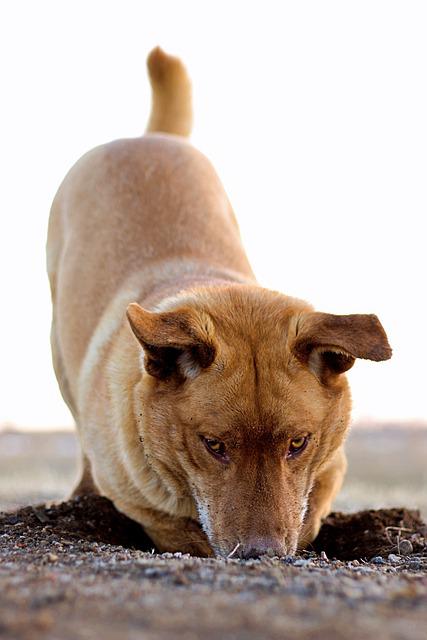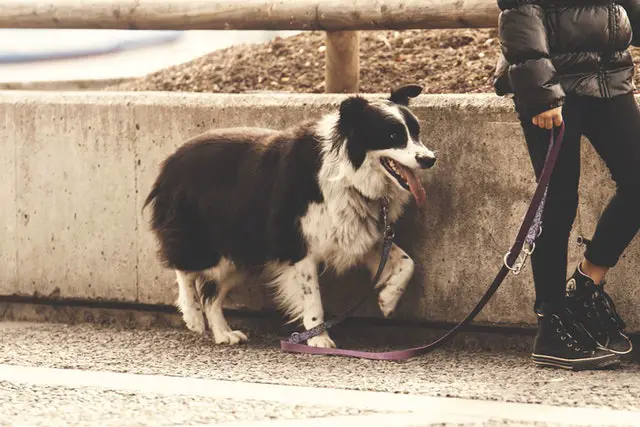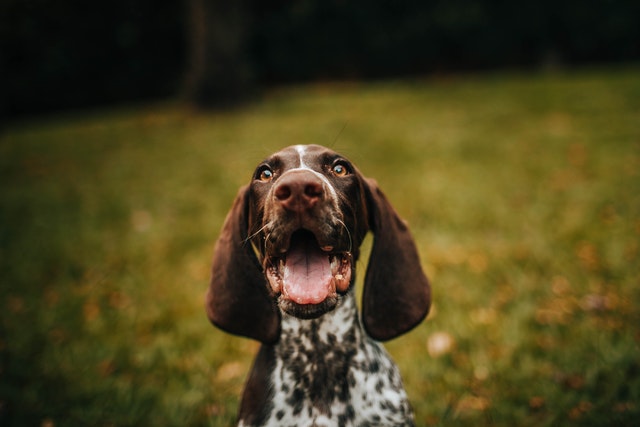Our pets like new grass as much as we do, but when they gotta go, they gotta go! If you’ve just invested in a fresh layer of sod, you may be asking yourself, how long should I keep my dog off new sod?
At the least, dogs should not be allowed to walk on sod for two weeks. At the most, they should be kept off of new sod for two months. This is to allow new sod to establish a strong root system before a dog can trample or urinate on the fresh grass.
It may seem like an overwhelming task to keep your furry friend off of an entire yard, but in the long run, it will give your new sod every opportunity to flourish. Let’s take a look at how dogs can spoil new sod, how long they need to be kept off sod, and methods to keep your sod safe!
How Dogs Can Spoil New Sod

Your playful pooch probably doesn’t mean to cause trouble in your yard, but there are a few ways that dogs can spoil new sod. Check out the list below to see why your sod needs to be defended from a four-legged friend:
- A dog’s urine can damage the health of new sod.
- A dog’s digging habits can uproot new sod.
- A dog’s temperament can cause them to rip up new grass.
- Let’s take a deeper look into why these three factors can result in your dog ruining newly laid sod.
- A dog’s urine can damage the health of new sod.
1. A dog’s urine can damage the health of new sod.
The healthiest of dogs still produces high levels of nitrates in their urine. Small amounts of nitrates aren’t harmful for grass. However, new lawns are usually established over a layer of soil that has been fertilized, and fertilizer already contains high levels of nitrates.
Nitrates are harmful to sod through the soil. Too much nitrate intake in plants causes the salt to stop converting into amino acids and proteins, which ultimately kills the roots of new sod.
In summary, a dog’s urine can be just enough to push the nitrate levels in the soil past the bearable point for new sod.
2. A dog’s digging habits can uproot new sod

Dogs dig for many reasons, and a few of those reasons become particularly attractive to dogs when new sod is laid down. For example, if a dog digs because they love to be exposed to new smells, they’ll be very excited to find out what your fresh grass seeds smell like up close.
New sod takes between ten and fourteen days to root. Until those roots are firmly established, a dog’s digging habits can be very harmful to new sod.
3. A dog’s temperament can cause them to rip up new grass
Even after the two-week period most new sod needs to root, dogs can still cause harm to your grass. This is because some dogs with high anxiety or stress levels handle their emotions with nervous habits, just like we do.
One of those nervous habits which can be particularly destructive for your lawn is ripping up grass. New grass catches the eye and teeth of upset puppies very quickly. A nervous enough dog runs the risk of not only ripping out stalks of grass, but uprooting new lawns, too.
4. A dog Can Trample the New Sod and Compact the Soil
When dogs repeatedly walk or run on new sod, their weight compresses the soil, reducing its porosity and hindering proper water drainage. This can result in water pooling on the surface, suffocation of the grass roots, and uneven growth patterns. As a result, the laws may have a patchy and unhealthy appearance.
How Long Should New Sod be Protected From My Dog?
It takes new sod 10 to 14 days to take root, but a lawn’s soil is not completely mature until two months after the new sod has been laid down.
Once your new sod is fully matured and established, the soil will be more capable of breaking down a dog’s urine. In addition, a new lawn’s roots are at their strongest after two months.
Therefore, a dog should be kept off of new sod for at least two weeks, and at most two months. If keeping your dog off of new sod for longer than two weeks proves too difficult, watch closely to discourage the harmful habits that can ruin your investment on your lawn.
How to Keep Your Dog Off New Sod
Keeping a dog off of new sod is not an impossible task, even if you are used to letting your furry friend have the run of the lawn. Here are a few ways to keep a dog off of the sod until it has matured, as well as a few ways to keep the fresh lawn safe afterward.
1. Go For Walks Instead of Using the Yard

As previously mentioned, a dog’s urination is one of the main ways new sod can be compromised. When a dog’s urine has damaged grass, you’ll notice patches of brown or yellow in your lawn.
To avoid this, don’t let your dog pee on the new sod! Instead, consider taking your pooch out to a park or on a walk through the neighborhood three to five times a day.
2. Section Off the Yard.
If your health or other circumstances prevent you from taking your dog on walks, you may still need the convenience of allowing them out in the yard. To protect newly laid sod, consider only seeding one section of the yard at a time.
This way, you can block off the section of the lawn that has been newly seeded while you puppy does their business in the section that is still safe. Restricting a dogs access to new sod will give your lawn time to recover.
3. Keep Your Pet Calm
Even after sod is established, a pet’s nervous habit of chewing grass may cause them to do just as much damage as they might’ve during your sod’s development.
A dog typically chews grass as a way of coping with stress, discomfort, or anxiety. Try keeping your pet entertained while they’re out on the lawn, distracting them from their worries with chew toys or a game.
If the problem continues to persist, consult your vet so that the grass and your pooch don’t have to suffer.
4. Discourage Digging
Dogs dig for several reasons. The one that spoils new sod the most often, as stated before, is a desire your puppy has to experience new smells. However, there are a few more reasons behind your dog digging up sod that are easily preventable.
Dogs sometimes dig because they can smell the presence of pests, like moles or insects. Moles are just as harmful to the soil beneath your new sod as your dog’s digging habit.
You can solve two problems at once using pest control products. Once moles and insects are no longer present, your tail-wagging pal won’t be tempted to dig them up.
Another reason your dog may be interested in digging up fresh sod is because they like to slip underneath your fence and enjoy some freedom. To keep the sod near your fence defended, discourage digging by lining your fence with a few rocks your dog can’t get around, or wire the areas off.
5. Use Repellents or Sprinklers
Some repellents utilize the power of scents to deter dogs from your new sod. Spray undiluted household vinegar or use lavender-scented spray around the perimeter of the lawn or use a lavender-scented spray. Additionally, cayenne pepper can be sprayed as a natural deterrent to keep dogs away. These are natural dog repellents.
In addition, the commercial alternatives are specifically designed to keep dogs off lawns. These products are made with certified ingredients that are safe for dogs. Make sure you follow instructions on the spray bottle for proper use, as some repellents may have strong odors.
In case you want to opt for a more physical repellent, you can use motion-activated Sprinklers. Install them near the new sod to keep dogs away. These sprinklers detect motion and release bursts of water, creating an unpleasant surprise for any dog that approaches.
Also see: Can Coyotes Climb Trees
Conclusion
A dog can harm new sod by increasing harmful elements in the soil with their urine, ripping up grass stalks with their teeth, or uprooting new sod with their digging habits. The best way to keep new sod safe is to keep a dog off new sod for at least two weeks, and at most two months. With careful planning, both you and your dog can enjoy a lush green lawn!

Hey, I’m Lisa and I’ve been an avid gardener for over 30 years. I love writing, talking and living in the garden! Feel free to connect with me on my socials below

